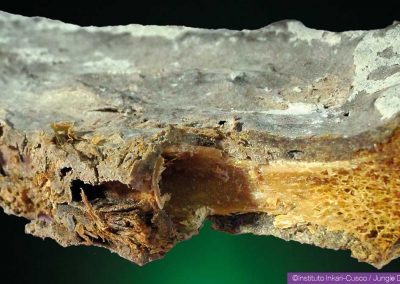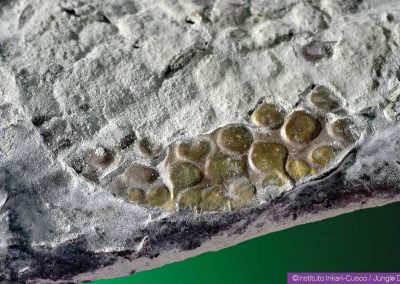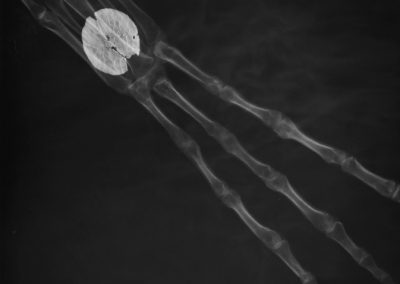These four large three-fingered hands were discovered near Nasca in Peru with the famous mummies studied by the Instituto Inkari – Cusco.

Translation: Catherine Rayer
Characteristics
Type: humanoid
Species: undetermined
Sizes between 35 and 40 cm
Presence of 3 fingers composed of 5 and 6 phalanxes with presence of nails (which cover 80% of the distal phalanx, while the nail covers only 50% of the first phalanx in humans)
Hands composed of 26 bones
Presence of skin and tendons
In one case, remain of fingerprint.
VIDEO
Presentation and analysis of radiography of the three-fingered hands by Dr. Julio Espero Torres.

C14 Datations
IFUNAM
years ± 30
BETA ANALYTICS
years ± 30
CTGA
years ± 25
Bone
CTGA
years ± 40
Skin
Hypothesis formulated by CTGA on age differences
Both Bone and Skin samples were removed from same finger material that were separated during the initial sampling stage. The difference in the C14 age for the two materials from the same finger sample is therefore highly suspect. Specifically with regards to the skin sample with a C14 date 6190 year older than the same sample bone. The Stable isotope and the low pMC support this observation.
A possible explanation for the anomaly is that the skin of the individual was treated with a substance(s) (such as embalming fluid) that has a carbon content of a far older origin than the fossilized material itself, possibly a hydrocarbon. A chemical analysis of the skin material can be performed to characterize the anomaly.

DNA analysis
BIOTECMOL
- Homo Sapiens 19,82%
PALEO DNA
- Homo Sapiens 100%
ABRAXAS
- Homo Sapiens 97,69%

Metallic implant analysis
Annular metal implant
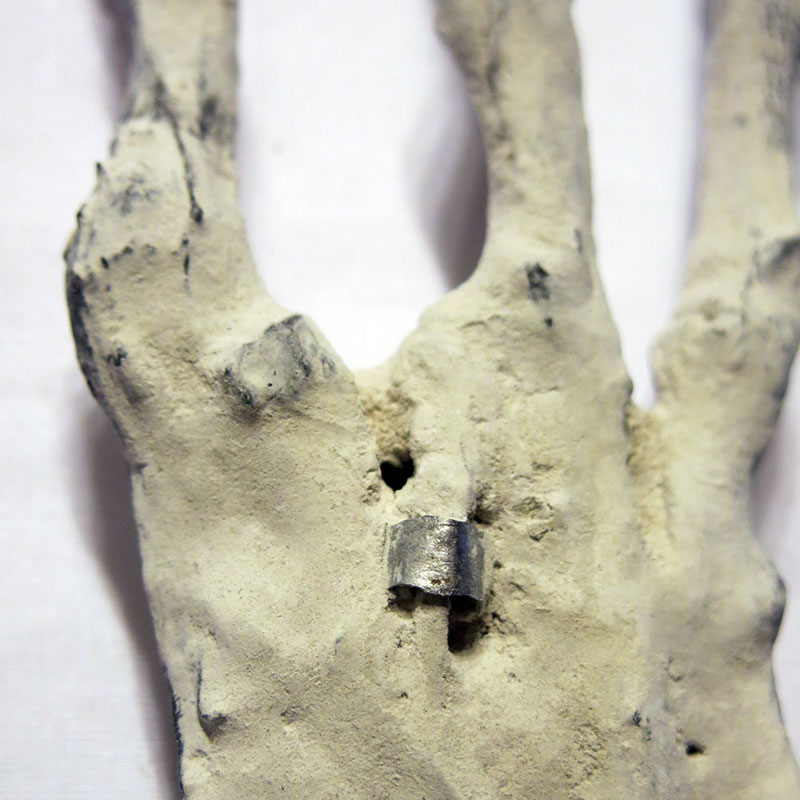
- Iron 78%
- Chromium 16%
- Carbon 5%
This sample is composed of an iron-carbon alloy (iron average 78% for carbon 5%) full of chromium (average 16%), however the EDS analysis does not make it possible to decide between a steel (stainless) or a cast iron (white). If this alloy does not contain any nickel in its intrinsic composition, it is detected on the other hand very locally on one of the analysis zones in an almost pure concentration (average 85%), which would indicate the existence of a nickel passivation layer for this sample (hypothesis to be considered apart from a possible exogenous contribution, with pollution by the tools used for the extraction, for example). We would have therefore for this sample a steel or a cast iron, perhaps covered on the surface with a layer of nickel, possibly deposited by electroplating (chemical or electrolytic bath). A mineral chemical signature is also observed for this sample, which is probably of exogenous origin (mineral gangue).
Disk-shapped metal implant
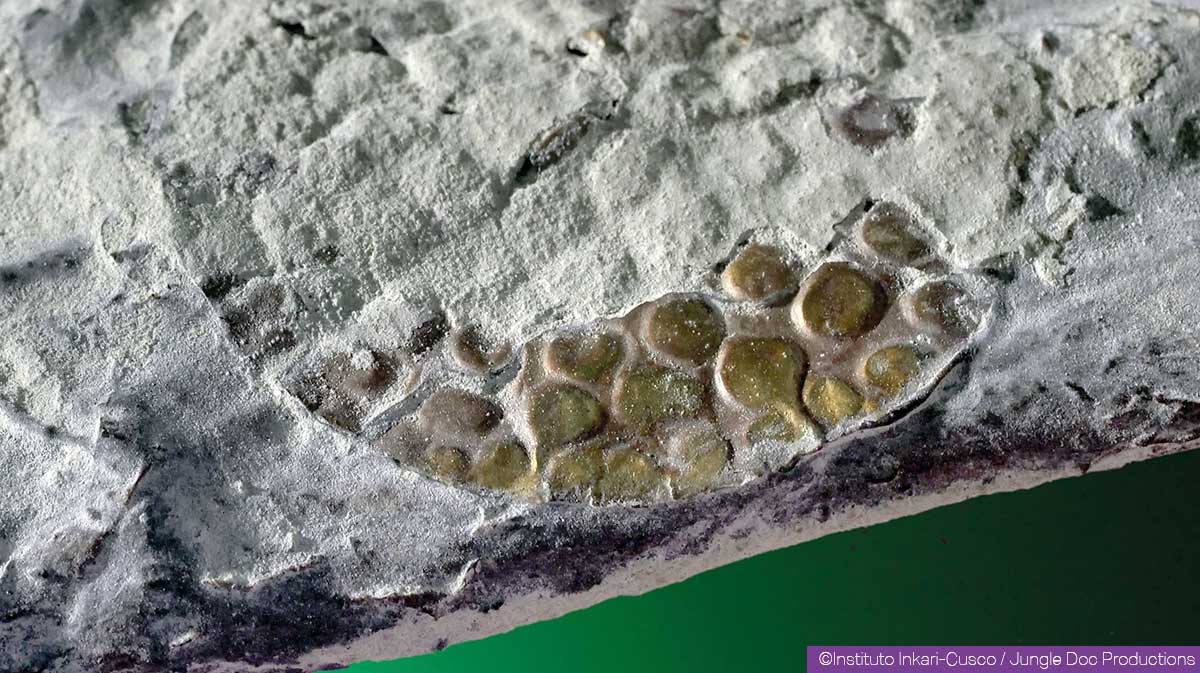
- Gold 60%
- Silver 30%
- Copper 10%
In the study context, this gold-silver alloy matches perfectly in terms of composition with alloys used at the Pre-Columbian era. Impurities presence such as iron in inclusion also goes in this way, plausible indicator of the use of a native gold-silver alloy for the design of the object, in the absence of completely mastered processes by the Pre-Columbian metallurgists for this type alloy development. It is also plausible that a finishing type “gilding by depletion “has been applied to the source object of the sample, whose alloy would then be a gold-silver-copper alloy, characteristic of many Pre-Columbian objects and significantly fuller of copper in mass proportion, the tumbaga.





